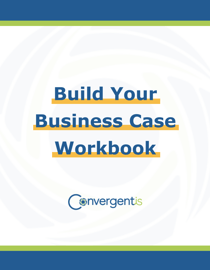In modern business, digital transformation has become essential across all industries. Procurement departments are no exception, and many companies are now focusing on implementing digital procurement solutions to streamline processes, cut costs, and drive efficiency. This article outlines how businesses can successfully transition to a digital procurement system and highlights the key steps to take.
1. Build a Procure-to-Pay (P2P) System
The first step toward digital procurement is setting up a robust P2P system. This system automates the entire procurement process, from requisitioning goods and services to paying suppliers. It helps to streamline workflows, improve efficiency, and provide real-time data visibility across procurement operations.
2. Build a Data Lake
Creating a data lake is crucial for storing and managing vast amounts of procurement data, encompassing both structured data like purchase orders and invoices, as well as unstructured data such as supplier communications and market trends. Unlike traditional databases, a data lake can accommodate large volumes of diverse data types, making it a flexible and scalable solution for modern procurement operations. By centralizing data from multiple sources, businesses can efficiently collect, process, and analyze this information in real time, enabling deeper insights and more informed decision-making. Additionally, data lakes support advanced analytics and predictive modeling, allowing organizations to forecast demand, optimize supplier performance, and proactively identify potential risks or savings opportunities. This comprehensive view of procurement data not only enhances operational efficiency but also drives strategic, data-driven decision-making across the entire supply chain.
3. Build a Spend Cube
A spend cube is a powerful analytical tool that categorizes procurement spending across the organization by organizing it into three dimensions: supplier, category, and time. This multi-dimensional view provides deep insights into how funds are allocated, which suppliers are being utilized, and the types of goods or services being purchased over specific periods. By leveraging this data, companies can better understand their spending patterns, identify inefficiencies, and uncover opportunities for cost-saving. For example, a spend cube analysis may reveal areas of redundant spending or highlight suppliers that are underperforming. With these insights, companies can renegotiate contracts, consolidate supplier bases, and drive strategic sourcing initiatives to maximize value. Additionally, the spend cube aids in risk management by ensuring that supplier performance and compliance are regularly monitored, fostering stronger, more cost-effective relationships with key suppliers.
4. Onboard Sourcing and Contracting Capabilities
Next, it’s important to onboard digital sourcing and contracting capabilities. This involves employing technology solutions that enable seamless vendor selection, contract management, and bidding processes. The result is a faster, more transparent, and efficient procurement cycle.
5. Expand Sourcing Capabilities with Automation
Automation can significantly enhance sourcing by streamlining the traditionally labor-intensive three-bid process. This process, which involves soliciting multiple quotes from suppliers to ensure competitive pricing, is especially time-consuming when managing smaller, low-value purchases, often referred to as tail spend. Automating these sourcing activities not only saves time but also ensures consistency and compliance with procurement policies. By automating the bid collection, comparison, and decision-making process, businesses can accelerate sourcing while reducing the risk of manual errors. This leads to greater efficiency, better adherence to procurement standards, and improved transparency, with a clear audit trail for all sourcing decisions.
ConvergentIS offers a robust automation solution specifically designed to address these challenges. The Procurement Gateway solution provides a fast, effective way to reduce operational costs, optimize supplier management, and ensure compliance. This not only frees up procurement teams to focus on strategic tasks but also helps organizations maintain control over small but frequent transactions that often go overlooked.
6. Implement Category-Specific Self-Service Solutions
Digital procurement platforms offer the ability to implement self-service sourcing solutions that are customized for specific procurement categories. These category-specific solutions enable individual business units to manage their own procurement activities within predefined guidelines, giving them the flexibility to address their unique needs quickly and efficiently. By decentralizing certain procurement tasks, organizations can reduce the workload of the procurement department, freeing them up to focus on more strategic initiatives. Additionally, this approach improves operational agility, as business units can make faster purchasing decisions without needing to go through multiple layers of approval. Not only does this enhance responsiveness, but it also encourages more efficient use of resources across the organization. In the long term, these self-service solutions can lead to better compliance with procurement policies, while still providing enough autonomy for teams to optimize their specific sourcing processes.
How to Implement Digital Procurement Solutions
Successfully implementing digital procurement requires an agile approach. Here’s how businesses can take action:
Adopt Solutions with an MVP Approach
Start by adopting new solutions through a Minimum Viable Product (MVP) approach. This method enables businesses to test the functionality of a new system on a smaller scale, focusing on the most critical features without over-committing resources. By starting with an MVP, companies can reduce risk, identify potential issues early, and gather valuable feedback from users in real-time. Testing the solutions over a six-week period allows enough time to assess performance, usability, and overall impact on procurement processes. If the solution fails to meet expectations or falls short of business goals, it can be abandoned or refined, allowing for a flexible and adaptive approach to digital transformation. If necessary, explore alternative options to find a solution that better aligns with your company's objectives.
Conclusion
Digital procurement is not just a trend but a necessity for companies looking to stay competitive in today’s marketplace. By following these steps, businesses can successfully transition to a digital procurement model that streamlines processes, reduces costs, and drives long-term growth. The key is to implement solutions with flexibility, ensuring that they meet the company’s unique needs and can adapt to future challenges.
By embracing digital procurement, businesses are better positioned to navigate complex supply chains, increase transparency, and create a sustainable, data-driven procurement strategy for the future.
Learn more business tips by downloading our Build Your Own Business Case Workbook below.


